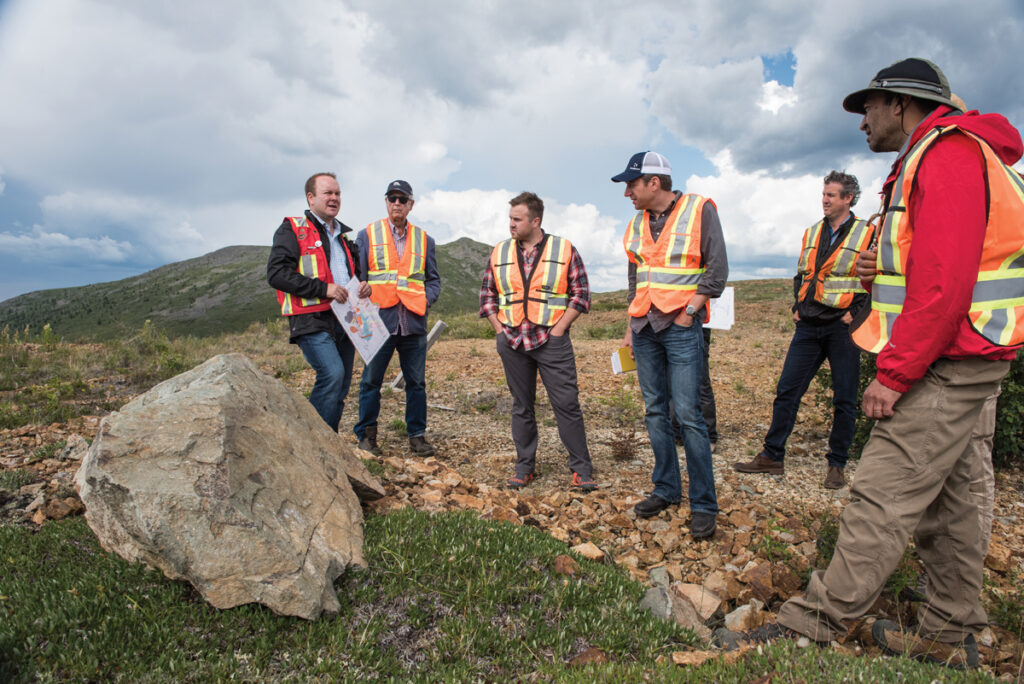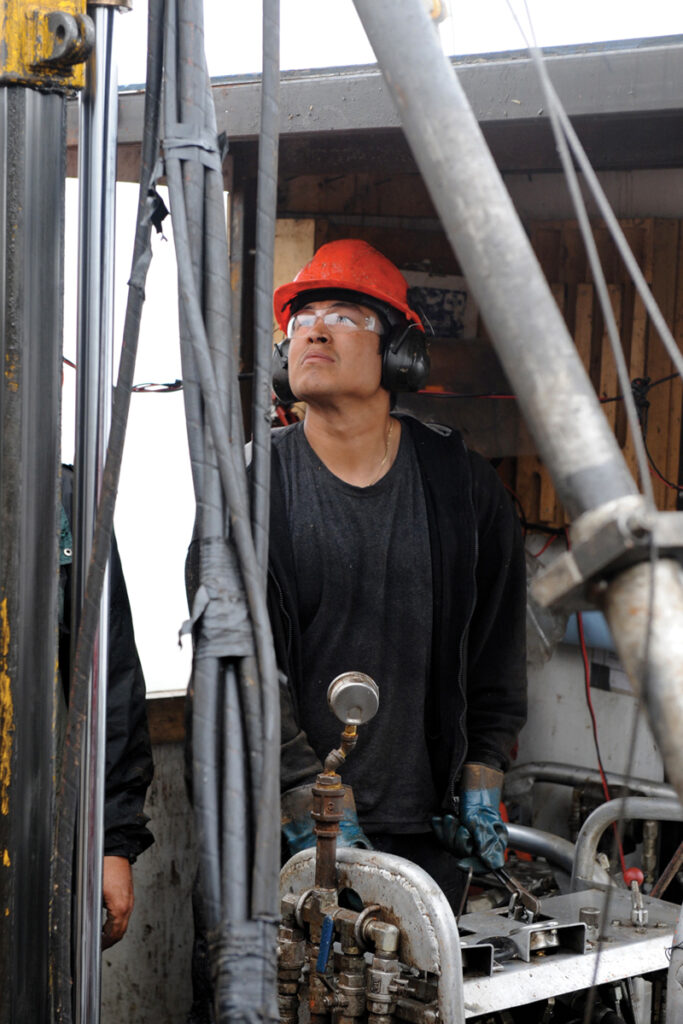Yukon’s Future Tied to Roads
$468M Resource Gateway Project Would Mean Massive Benefits

The Yukon Resource Gateway Project promises to create thousands of jobs in the territory by upgrading roads in mineral-rich areas while respecting the interests of affected First Nations.
In September 2017, the federal and Yukon governments announced they were each investing hundreds of millions of dollars to improve 650 km of roads in key areas in the territory. The project will see improvements to roads, bridges, stream crossings and culverts in the Dawson Range and the Nahanni Range areas. According to a September news release, the total price tag will be about $468 million. The federal government plans to give up to $247,381,000 over eight years with the territorial government contributing up to $112,802,000 and industry providing $108,662,000. The federal money comes from the New Building Canada Fund – National Infrastructure Component.
The Yukon Government submitted its application for the funds in 2016 before the Liberal Party, under Sandy Silver, defeated Darrell Pasloski’s Yukon Party in that year’s November election.
The announcement comes while many expect an upcoming boom in the mining industry.
It’s unclear how long the Minto copper mine, currently the territory’s only active mine, will continue running. But three large potential mines stand to benefit from the upgraded roads: Western Copper and Gold’s Casino project north of Carmacks, Goldcorp’s Coffee advanced exploration project south of Dawson City and Selwyn-Chihong’s zinc and lead site west of Howard’s Pass, north of Watson Lake and along the Yukon-Northwest Territories border. None of the projects have been approved and are in different stages of the regulatory process.
The northern part of the Dawson Range construction includes upgrading the existing Goldfield Roads, and improving the Indian River Road to Coffee Creek. The southern part of the Dawson portion includes upgrading the Freegold Road and building a bypass around Carmacks. Casino Road will also be upgraded. Finally, a new road between Coffee and Casino will be built. The Nahanni Range Road portion of the project includes upgrading the Nahanni Range Road from its junction with the Campbell Highway to the Northwest Territories border.
Photo by www.archbould.com
Construction of Western Copper and Gold’s Casino Mine is expected to require 1,000 workers.
4,584 Jobs Across Canada
The project promises thousands of new jobs; the government’s application estimates it will create 4,584 across Canada, with 2,645 happening in Yukon. It also promises renewed relationships with the territory’s 14 First Nations. Agreement from the First Nations is an “integral” part of the project, said Yukon Minister Richard Mostyn, Highways and Public Works.
“No components will proceed without the agreement of affected First Nations,” he said, noting the government’s still early in this process.
Mostyn said he expects construction on the project to begin in 2019 – not 2018 as originally hoped. He anticipates the gateway project will finish by 2025. The government wants to do more consultations with the affected First Nations before construction begins.
Those delays don’t surprise Paul West-Sells, President of Western Copper and Gold. Opening a mine involves a lot of bureaucracy, he said. The Casino mine is currently before the Yukon Environmental and Socio-economic Assessment Board (YESAB). It’s at a panel review, the highest level in the territory. Construction on the mine won’t begin for another two or three years, West-Sells said. Work on the Yukon Resource Gateway Project should have started by then.
“I don’t need those access roads to be complete by that time, but hopefully construction has started on them,” he said.
YESAB has already approved how the company previously consulted with affected First Nations, said West-Sells. It plans to hire First Nations and local community members.
“It’s the Yukon and the North first and the First Nations communities even before that,” West-Sells said of the company’s hiring priorities. “I don’t think we’ll be turning people away who are local from working at that mine.”
Casino is poised to become a major employer in the territory. The company estimates it will take 1,000 people to construct the copper and gold mine. At peak production, the mine will employ about 600 workers. It’s expected to run for 22 years. That’s 10 years more than Goldcorp expects its open-pit gold Coffee mine to run, according to 2016 estimates. Those same estimates predict employing 450 workers during peak construction and 126 people on-site during mine operations. Also in 2016, Selwyn estimated 750 people would work at its mine site.

Increased road access could also benefit small, family-owned and operated placer mining operations, said Jonas Smith, executive director of the Klondike Placer Miners’ Association. The organization represents more than 160 family-owned and operated placer mining operations in the territory, many with claims in the areas affected by the Gateway Project. Right now, many members don’t have year-round road access to their claims. Road improvements could benefit them.
“(A lot of people) think the Gold Rush happened, and it was over. But the reality is, it has gone on uninterrupted for 120 years now,” said Smith.
As of September 2017, there were 25, 219 placer gold claims in good standing in the territory, according to the Yukon Geological Survey’s Placer Mining 2017 Development Overview. This number has increased each year since 2004, the report says, but the current number is the highest since 1973, and perhaps in history.
These operations don’t involve large machines or chemicals. “Only water and gravity are used in the extraction of placer gold,” said Smith. But communities like Dawson City survive because of it. “If it weren’t for placer mining, Dawson City would probably dry up pretty fast,” he said.
Wayne Potoroka, Mayor of Dawson, couldn’t say how the Yukon Resource Gateway Project will benefit the city. He said in an email the city hasn’t been approached about work related to the project since much of it will happen outside of municipal boundaries. But at least one mayor in Yukon is hoping the project will benefit his community.
Community Benefits
Carmacks Mayor Lee Bodie hopes the bypass around Carmacks will open up land for development. He wants to attract future mining employees to the village of about 560 people, which is closer to the Casino site than Whitehorse. The winding Yukon River and rolling mountains make it difficult to build much-needed housing in the community. A new road could ensure community safety by diverting large trucks. It could also make more land available for homes, increasing the town’s municipal boundaries and tax base.
New residents will need more businesses and services, he said.
“We’re not looking for a mine to be the end-all of our population boom,” said Bodie.
It’s too early to say how many jobs the Yukon Resource Gateway Project will provide the territory’s First Nations, said Albert Drapeau, Executive Director of the Yukon First Nation Chamber of Commerce. The “key” to the Yukon Resource Gateway Project’s success, he said, is good collaboration between First Nations governments, Yukon Government and mining companies. The chamber’s main concern is ensuring there’s enough qualified workers to meet the territory’s labour needs if the mines open. There’s not enough people in the territory to fill all the jobs, he said.
Artificial intelligence is eliminating some transportation and machine operating jobs, Drapeau said. But there’s still work available in technology, engineering, environmental assessments, wildlife management, or biology. The chamber needs to engage youth and help them determine what they want to pursue, he said.
“The world is their oyster,” Drapeau said. “They can pick and choose what they want to do.”

